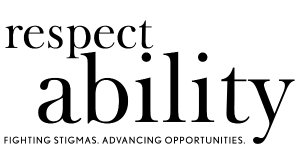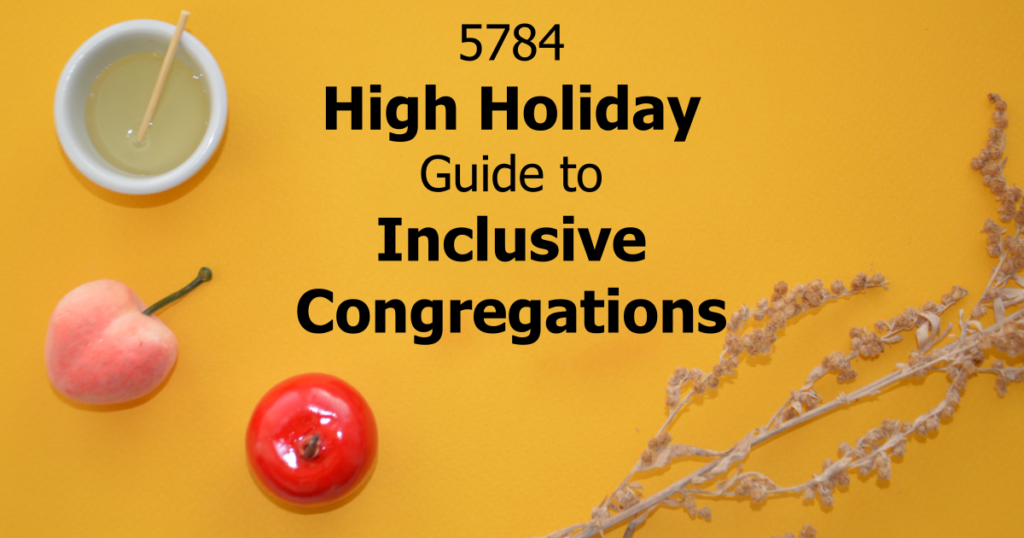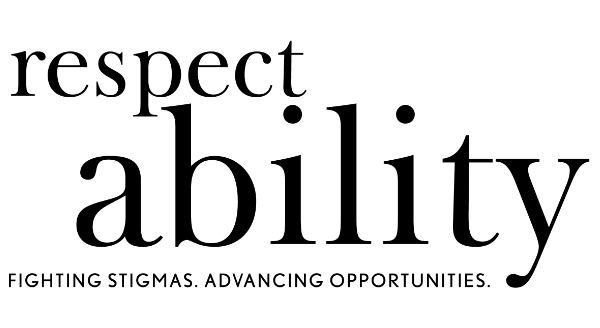Download the accessible Word document or view each section of the toolkit by following the links below:
- RespectAbility 10 Year Anniversary
- Shana Tova!
- The Americans with Disabilities Act (ADA) in Faith Communities
- Diversity, Equity, Inclusion, Accessibility = Belonging
- Before The High Holidays
- General Accessibility Guidelines
- In-Person Events/Services
- Outside The Synagogue
- Virtual Events/Services
- About The Authors
- Appendix A: Live Captioning Companies
- Appendix B: ASL Interpreting Companies
- Appendix C: Materials Available From JBI
Check out RespectAbility’s Faith Inclusion Resources page if you are looking for textual or other content to weave the disability experience into your high holiday celebration. Wishing all a Shanah Tova u’Metukah, a sweet good year.
RespectAbility 10 Year Anniversary
RespectAbility has had an incredible decade of success in advocating for people with disabilities. As the only national disability organization with a faith inclusion department, our Faith Inclusion and Belonging team collaborates with Jewish organizations to elevate the voices of people with disabilities across the lifespan in all areas of Jewish life.
In 5783 our Faith Inclusion and Belonging Team produced the High Holiday Guide to Inclusive Congregations, and we are pleased to offer this 5784 edition. When JDAIM co-founder Shelly Christensen joined RespectAbility as the first Senior Director of Faith Inclusion and Belonging, she brought JDAIM with her. This year we created the 2023 JDAIM Program Guide, organized JDAIM Reads, and kicked off the month-long event with disability rights icon, Judy Heumann z’l’ discussing JDAIM Reflections on Faith and Disability. Our incredible Jewish speakers provided meaningful and memorable in-person and online trainings, sermons, and conversations throughout the year for local and national Jewish organizations.
All the accomplishments and activities have been powered by generous support from the public. But there is much left to accomplish to fully eliminate harmful stigmas and create more opportunities for people with disabilities to belong to their Jewish communities. We need your support to ensure success in the next decade.
Please consider donating in honor of this milestone to help us make an even bigger impact in the decade to come. Your donations help us support people with disabilities so they can fully participate in, and contribute to, all aspects of their community. Join our movement!
Shana Tova!
Dear Friends,
Welcome to the 5784 High Holiday Guide to Inclusive Congregations! The Guide offers synagogues and Jewish organizations many practical tips for accessibility in all the services, events, and programs you offer. The High Holiday Guide to Inclusive Congregations takes you through communicating high holiday information, providing ASL interpreters and live captioning, planning accommodations for in-person and virtual services, Tashlich, Sukkah visits and everything in between! The Faith Inclusion and Belonging team at RespectAbility is thrilled to provide this resource and know you’ll enjoy putting these ideas into action.
To begin the new year, let’s consider three texts from the Tanakh (Hebrew Bible). The ancient texts are meaningful on their own. Together they remind us of who we are, how we support each other, and what we do to engage with each other.
In B’raisheet (Genesis) Chapter 1 we learn of all of God’s wondrous creations including the different species that populate the new world. Of all these creations, only humans are made B’tzelem Elohim, in the Divine image. (Gen. 1:27). The Torah is clear. All humans, including those of us with disabilities, are created in God’s image. No exceptions!
In B’raisheet (Genesis) Chapter 18 we learn about hospitality and welcoming the stranger. As Abraham rested in his tent, he noticed three strangers traveling on the dusty road. Abraham rushed to meet them, inviting them to rest and refresh. Abraham and Sarah didn’t ask who they were or why they were there. They performed acts of comfort and care, washing their feet and preparing a meal made with the very best ingredients. This example of hospitality is legendary. It demonstrates how people should be honored, valued, and respected.
Pirke Avot 4:1 (Ethics of Our Fathers) asks, “Who is wise? One who learns from every person.” This question inspires curiosity about the people we meet. Listening and learning from one another is at the heart of inclusion. When we engage with someone who lives with a disability, we are encountering the Divine presence in that person. It is imperative that as a community we engage in respectful curiosity, sharing our unique experiences, including disability, to learn how to support each other. This is the essence of belonging.
The High Holiday Inclusive Congregations Guide provides practical ideas for including people with disabilities in High Holiday rituals, services, and celebrations throughout the year.
Shana Tova U’metuka!
Shelly Christensen, MA FAAIDD
Senior Director of Faith Inclusion and Belonging, RespectAbility
ShellyC@RespectAbility.org
The Americans with Disabilities Act (ADA) in Faith Communities
What does the Lord require of you but to do justice, and to love kindness, and to walk humbly with your God. Micah 6:8
On July 26, 1990, the Americans with Disabilities Act (ADA) was signed into law by President George H.W. Bush. The ADA is a comprehensive federal civil-rights statute protecting the rights of 56 million Americans with disabilities, entitling them to equal opportunities as citizens of the United States. The ADA is landmark legislation for many people who, prior to its passage 33 years ago, couldn’t even cross the street using a wheelchair, use the restroom in public buildings or ride public transportation.
Religious institutions are generally exempt from the ADA. They are covered by Title I employment regulations in the case of organizations with 15 or more employees.
According to the Collaborative on Faith and Disabilities 84% of people with disabilities say their faith is important to them, but only 45% of people with severe disabilities attend a place of worship at least monthly. Only ten percent of faith communities do congregation-wide disability awareness. Thirty-two percent of parents changed their place of worship because their child was not included or welcomed.
The ADA is a moral mandate for faith communities. The ADA provides guidance on improving access to buildings and grounds, and to programs, services, and employment opportunities. Biblical texts can provide another kind of guidance. Throughout the Tanakh (Hebrew Bible) we encounter people with lived experiences of disability. Moses, who lived with a speech disability, was appointed by God to advocate for the Israelites freedom from slavery and lead them to the land God promised to Abraham. When Moses resisted taking on this enormous responsibility because of his speech disability, God provided the first known accommodation, Aaron, to be Moses’ voice.
The legacy of Moses ensures that all people are accepted, included, and supported to have access to all that a religious or spiritual community offers. The key word is “community.” That is where we feel that we belong.
Diversity, Equity, Inclusion, Accessibility = Belonging
Creating a community of belonging must be intentional. Understanding the terms that comprise DEIA=B provides the framework for faith communities.
Diversity encompasses all the ways in which people of the same faith and belief system can differ, including but not limited to race, gender identity, sexual orientation, age, socioeconomic status, disability, mental health, or national origin.
- Diversity is more than just acknowledging and/or tolerating difference. It’s a set of conscious practices that seek to understand and appreciate the interdependence of humanity, cultures, and the natural environment.
Equity ensures everyone has support and access to the resources they need to flourish, identifying and eliminating barriers that have prevented the full participation of communities most impacted by systemic oppression.
- Improving equity involves increasing justice and fairness within the procedures and processes of institutions and systems, as well as in the distribution of resources. Tackling equity issues requires an understanding of the root causes of outcome disparities within our society and institutions.
- Equity differs from equality. Equality refers to treating everyone the same but does not necessarily lead to equitable outcomes because diverse communities have diverse needs and have faced varying obstacles and inequities.
Inclusion requires that people of all backgrounds, identities, abilities, perspectives, and beliefs have an equal opportunity to belong, achieve, and contribute to their communities. An inclusive institution promotes and sustains a sense of belonging; wherein all people are respected for their inherent worth, dignity, talents, beliefs, backgrounds, and ways of living.
Accessibility is the design, construction, development and maintenance of facilities, information and communication technology, programs, and services so all people, including people with disabilities, can fully and independently engage with them.
Belonging is a human need. When we belong, we are seen for the whole of who we are. We are contributors to the community, not recipients of others’ intentions. We are known, valued, respected, and supported. A community of belonging is the most important outcome we can achieve.
Before the High Holidays
High Holiday Information Packet
- High Holiday Schedule of Events and Services Checklist: Provide a High Holiday Schedule of Events and Services checklist, and how they will be offered (in-person location and/or online). Include start and end times so virtual congregants can plan, get logged on if accessing virtually, and have everything they need readily available. Those who use transportation services need to arrange rides if attending in-person.
Creating and Sending High Holiday Information
High Holiday information is often sent via email or e-newsletter. When creating and sending digital materials, here are some accessibility protocols to keep in mind:
- When using graphics, include alternate text (also known as alt text or image descriptions) to ensure accessibility for blind and low-vision people using screen readers.
- Alternate Text describes the purpose of the graphic, not just the appearance. For example, write “a bar graph comparing ticket sales in movie theaters across the United States over the past decade.” Do not say “a graph,” as that does not convey the purpose of the graph.
- Do not say “Image of.” Screen reader software will identify the image as an image before reading the alternative text, so writing “image of” is redundant.
- Mention specific colors if they are pivotal to understanding the image/graphic.
- Share the emotions that the image is trying to evoke. Say “a funny picture of a man fishing” versus “a man fishing,” for example.
- Transcribe text if the image/graphic includes copy that is central to its meaning.
- Keep alternative text as concise as possible while including all necessary information. Some screen readers cut off alternative text after a certain number of characters. As a result, if a graphic contains more than a few sentences of text, it is best to find another way to share that text.
- Include a plain text version without graphics.
- Avoid e-invite systems, like Eventbrite, that are not screen-reader-accessible.
- Clearly state what accommodations will be available at your services: ASL interpreters, captioning, Braille prayer materials, location of parking and ramps, accessible entrances to the building, and locations of accessible restrooms, etc. Many people with disabilities will not attend services if it is unclear that their accessibility needs will be met. Stating accommodations upfront serves to illustrate that your services are inclusive.
- Provide the name and contact information of the staff member in charge of disability accommodations (see Accommodations Statements).
- For easy reading and legibility, choose 14pt or larger sans-serifs typefaces in black text on a white background. The typeface used in this guide is Tahoma.
- For more detailed information and guidance, watch RespectAbility’s training: How to Ensure a Welcoming Lexicon, Accessible Websites and Social Media, and Inclusive Photos (https://bit.ly/lex-icon).
Accommodation Statements
Accommodation statements belong in all your written and electronic communications, including all emails, the homepage of your website, and announcements for all programs and events. These statements invite individuals to tell you what they need to participate. Always include contact information and a due date by which requests should be made.
Sample Language
“If you require a disability accommodation in order to participate in [the meeting/services/event, etc.], please contact [name of individual responsible for taking requests, if applicable] at [phone and email] by [due date to make the request.]”
“We welcome and support children, teens, and adults with disabilities and mental health conditions, as well as their families and caregivers. We make every effort to ensure our programs, equipment, and facilities are accessible. Please phone or email us if you have any questions or would like to request a disability accommodation.”
Additional language may be added to state that requests for accommodations made after the advertised date are not guaranteed.
Accessible Prayer Materials
Provide digital service materials in advance. Attach digital documents in advance to allow blind or low-vision people to familiarize themselves with the material ahead of services. Access to digital materials beforehand can help neurodivergent people prepare for the service itself, easing anxiety and helping with focus.
- Large print materials, including prayerbooks and mahkzorim are available from your movement’s publisher. Have many of these available.
- Check with your movement to see if there is a discount for group and individual purchases of hard copies.
- Loan books to congregants who want them.
- If loaning books, be sure to have large-print versions available for those who request them.
- Some Jewish publishers offer mahkzorim as e-books. Include the price of each item along with its URL should congregants wish to purchase their own copy.
- Some mahkzorim are available as flipbooks so people can follow along on their electronic device. Email this link when you email the link to stream services. You can also include the url information in the chat.
- Make High Holiday materials available in Braille. The importance of making Hebrew texts available in Braille is outlined here (bit.ly/braille-torah). JBI International (bit.ly/3q4uefx) (formerly the Jewish Braille Institute) has many materials for individuals (not the organization) to borrow. In addition to Braille materials, JBI International has large print and audio materials. The National Braille Press offers translation services and will provide a quote for materials on their website. Note: it takes 20 business days to process requests, so plan accordingly.
- Braille prayer materials are often difficult to obtain and typically must be requested by blind or low-vision persons themselves. Offer support for members of your synagogue who face these barriers and remind them that they are a valued member of your community.
- Some people may not be able to turn the pages. Attach sticky tabs to every page you will be using to make it easy for individuals to turn pages.
- Both Microsoft Word and PowerPoint provide accessibility assessments of materials. More information can be found here: bit.ly/microsoft-accessibility.
Neurodivergent Access
Up to 15% of the US population is neurodivergent (also referred to as “neurodiverse”). Neurodivergent (ND) conditions include:
- Learning Disabilities
- Attention Deficit Hyperactivity Disorder
- Autism
- Down Syndrome
- Obsessive Compulsive Disorder
- Developmental speech disorders
- Dyslexia
- Dysgraphia
- Dyspraxia
- Dyscalculia
- Dysnomia
- Intellectual disability
- Tourette syndrome
Here are some things to keep in mind:
- In your digital invites, share a document that shows the order of each service so that neurodiverse people can prepare ahead.
- Provide a plain-text version of the e-invite. Overstimulating materials can be distracting, distressing, and may cause seizures.
- List an option on your e-invite materials for low-sensory experiences, such as live streaming rather than attending the in-person service or having a low-sensory space (sensory rooms) within the building.
- If physical invitations are used, avoid glitter and scented stationery.
General Accessibility Guidelines
At the start of services and other events, clergy should announce what accommodations are provided. Explain what they are. Offer an invitation to communicate with the staff directly if someone needs an accommodation.
Live Captioning
The gold standard of captioning is Communication Access Realtime Translation, or CART, wherein a live transcriber types what is spoken in real-time. This can be used on any platform. Zoom is screen-reader-accessible, but screen sharing on Zoom is not. RespectAbility events always include CART, even when virtual. This involves utilizing a third-party closed-captioning service. Many companies provide this relatively inexpensive service. There are also in-person CART transcribers.
Automated Speech Recognition captioning services are another option, though not as effective for individuals relying on captioning. Zoom, Facebook Live, and YouTube are examples of streaming platforms that allow automated captioning, although they do not caption Hebrew transliteration. To learn more about what each platform accommodates, please view this chart compiled by Connect-Hear.com (https://bit.ly/connect-hear).
CART, Automated Speech Recognition, and non-embedded captions can be useful for people who are D/deaf/Hard of Hearing, those with learning disabilities, and people whose first language is not English.
ASL Interpreters
American Sign Language (ASL) is not a one-to-one visual depiction of English; rather, it is grammatically distinctive from spoken and written English. ASL is a native language to many, and, therefore, may be preferred above captioning. This may be especially true during interactive discussions, or during events involving complex subject matter, technical terms, and industry-specific terminology, for which captioning would not be suitable.
When using Zoom, ASL interpreters will need log-in information and a link or invitation to the room. Share names of speakers and any PowerPoint presentations ahead of time so the interpreters can become familiar with the materials.
It is important to spotlight ASL interpreters (bit.ly/spotlight-interpreters) and no one else on screen so viewers can watch the interpreter’s window. Ensure that the meeting or event is set to gallery view. When screen sharing, ensure the video is set to side-by-side view; otherwise, participants will only see the screen shared and the person speaking, but not the ASL interpreter.
Hire your sign language interpreter as early as possible. Two weeks before the event is recommended. Confirm that the sign language interpreter is certified and experienced, and let the interpreter know if the event will be shared publicly. Interpreting a live event is labor-intensive and tiring, and it is an industry standard to hire a minimum of two interpreters for any event longer than an hour.
For in-person events, save front-row seats for both ASL interpreters and people needing translation. Make sure the interpreter is well-lit and visible.
Funding CART, ASR, and ASL
A modest financial investment is involved in providing accessibility services. The cost can range from $80-$125 per hour for captioning and $160-$200 per hour for a team of two ASL interpreters. All things considered, this is a relatively small amount of money, and it will enable the full inclusion and participation of many more congregants.
Discuss funding for CART, ASL interpretation, and Automated Screen Recognition at your synagogue’s board meeting. At the heart of this discussion is a commitment to finding ways for disabled people to belong. Boards will need to decide whether inclusion of disabled people is something they value and may choose to speak to a few key donors willing to make a gift, knowing it will allow others access to Jewish community life.
Some synagogues may be unable to afford these accommodations. If this is the case, aid congregants in finding other synagogues better equipped to provide full accessibility.
Make accessibility a line item in your budget or part of your fundraising goals for the new fiscal year. This will help remove some cost barriers.
Synagogues providing accessible services need to let the community know. Share it with your colleagues; include accessibility information on your website and social media. Create a webpage in your local community where synagogues and other Jewish organizations can share accessibility and service information. Your accessibility accomplishments are worth celebrating and utilizing!
Reach out to your local Federation to ask if there is funding for ASL and CART services.
Visual T’fila (Prayer)
Visual t’fila has grown in popularity. It is another way for people to access prayers on-screen and to include pictures and videos in services. Visual t’fila can be displayed on computer screens and monitors. Congregations can create their own visual t’fila in PowerPoint or purchase a package from several Jewish publishers. When creating your slide deck, include slides with the names of people who your congregation is remembering for Misheberakh, Kaddish, and Yahrzeit.
Online Accessibility (Zoom/Live Streaming) and Hybrid Services
Holding hybrid services, in which there are both in-person and live streaming/Zoom options, allows for maximum participation and inclusion. When planning hybrid events and services, think of the in-person and virtual as two different events, ensuring maximum accessibility in each.
“Please Rise” Alternatives
When certain prayers are recited during a service, such as the Amidah (literally “standing prayer”), congregants are invited to stand. Some congregants may not be able to. There are variations on “stand” language, such as instructions to “please rise if (as) you are able” or “please rise in body or in spirit.” These are accepted alternatives.
Your congregation can create language that is respectful and inclusive of all.
Rabbi David Locketz of Bet Shalom Congregation in Minneapolis offered this variation on “stand” language at the beginning of Yom Kippur services:
“Throughout our service, when our liturgy calls for it, I will be inviting you to rise and stand together as a congregation. If you are not able to rise when the liturgy calls for it, don’t fret. Sit comfortably. Whether you are sitting or standing, your prayers will be accepted all the same. May we together be carried to the great heights that our rituals are intended to take us.”
In-Person Events/Services
Guidelines for In-Person Public Gatherings
While the rest of the world seems to have moved on from the Covid-19 pandemic, many disabled people remain vulnerable. It is of utmost importance to protect people with disabilities by maintaining Covid-safe practices during the High Holidays. The U.S. Center for Disease Control’s most recent guidelines do not consider the individuals most vulnerable to the Covid-19 virus.
To learn more about the perspective of disabled and chronically ill people with lived experience, please view this video: (bit.ly/covid-and-disability).
For more information, please visit The People’s CDC (peoplescdc.org)
Safety for People with Low-Immune System Functions
Require Masking
Masking of ALL in-person participants with KN95 and above quality masks significantly lowers the chance of a person with low-immune system function–and for whom vaccines may not be effective–contracting the COVID-19 virus. Requiring masks, especially indoors, creates a safer environment for those most at risk. Be sure to provide KN95 masks. Masking is loving your neighbor, and is one of the best ways to protect people with the following conditions (this list is not exhaustive):
- Diabetes
- Cerebral Palsy
- Asthma
- Kidney failure
- Heart conditions
- Lung disease
- Cancer
- Liver disease
- Developmental disabilities
- Learning disabilities
- HIV
- Spinal cord injuries
- Depression
- Obesity
Require Proof of Vaccination
Vaccinations significantly lower the risk of a deadly COVID-19 infection and protect those around us. Consider requiring proof of vaccination, or, alternately, negative test results for unvaccinated people.
Require testing
Have congregants arrive 20-30 minutes early to allow time for rapid testing and results.
Ventilation and adequate physical distancing
Choose service spaces that are large enough to accommodate adequate physical distancing. Make sure the space has adequate ventilation, such as air filtration, fans, open doors, and windows to allow cross breeze.
Include outdoor options
Create a viewing and gathering space outdoors, where the virus is less likely to spread. Be sure to include people who choose to participate outdoors as much as possible.
Publicly share what safety measures you are taking
Amplify your safety measures by sharing them with all High Holiday attendees, and in all email communications.
Neurodivergent Considerations
Neurodivergent people experience and interact with the world around them in a variety of ways. There isn’t a right or wrong way of thinking, learning, and behaving. Autism, Attention Deficit Hyperactivity Disorder (ADHD), developmental speech disorders, dyslexia, dysgraphia, dyspraxia, dyscalculia, dysnomia, intellectual disability and Tourette syndrome are considered neurodivergent. Accessibility supports may vary widely. When a neurodivergent congregant requests accommodations, have a conversation with them to understand how to support their participation.
Many neurodiverse people are extra sensitive to external stimuli. Excessive sensory input can be overwhelming and exhausting. Overstimulation can occur when the senses take in more information than the brain can process. Provide support by offering a low stimuli “quiet room.” The space should have a low-volume, captioned livestream of the service.
Fragrance and Scent-Free Environments
Ensure a low-scent or scent-free environment in consideration of those with allergies, migraines, MCAS (mast cell activation syndrome), and MCS (multiple chemical sensitivities). This includes asking congregants to forgo wearing perfume, lotions, and other fragrances.
Scents can severely affect a person’s health, causing headaches, upper respiratory symptoms, shortness of breath, and difficulty with concentration. People with allergies and asthma report that certain odors, even in small amounts, can cause asthma symptoms.
While your impulse may be to create a “scent-free zone” in your sanctuary, this does not work for several reasons, and is akin to making a “no-smoking section” on an airplane. Scents carry, and the practice segregates those with sensitivities, diminishing inclusion and belonging.
Cleaning supplies used in public spaces should be scent-free. Have an open dialogue about this to ensure everyone feels heard and included.
Accessible Parking
Accessible parking spots must be designated by signage and blue stripes. Vehicles that don’t have an accessible placard or designated license plates must never be permitted to park in accessible spots or on the adjacent diagonal stripes. This includes motorcycles, bicycles, and golf carts. Don’t allow parking in the van accessible spots marked by diagonal stripes.
Transportation
For many people with disabilities, transportation access is a huge barrier in attending shul. Your city may lack safe, accessible public transportation, and transportation provided by the members of your community is a way of ensuring access, safety, and trust for those with disabilities. If possible, provide a wheelchair-accessible shuttle for pick-ups and drop-offs. Organize carpools among laypeople with wheelchair-accessible vans.
Greeters and Ushers
Greeters and ushers are often the first contact people have at shul. Therefore, appropriate training is imperative for an inclusive and welcoming environment. Educate your greeters and ushers on accessibility protocols, including accessible seating for wheelchair users, emergency exits, locations of accessible restrooms, and quiet spaces outside of the sanctuary. Make certain your ushers and greeters use welcoming, respectful, inclusive language. Phrases like “differently abled” and “handicapped” are inappropriate. “Disabled” is not a bad word! Do not force assistance upon someone. Gently offer, but if someone declines help, avoid asking “Are you sure?”
Do not allow ushers to remove personal durable medical equipment–such as wheelchairs, crutches, walkers, or canes–away from the user. These mobility devices are bodily extensions crucial to a disabled person’s wellbeing and movement, especially in the event of an emergency.
Make sure exits are clearly marked in case of emergency. Ushers should know all exit locations because they will assist people to find the closest exits. An evacuation plan is crucial. Clergy, ushers, and others on staff must be aware of the procedures should an evacuation be necessary.
Seat Locations
Many congregants who are wheelchair users prefer to sit with family and friends, just like anyone else. Too often they are placed in the “wheelchair section,” a location at the front of the sanctuary or in the back. Do all you can to seat people where they want to be seated. Avoid putting wheelchair users in the center and side aisles. This is unsafe and can be very uncomfortable.
Tips for Improving the Accessibility of Your Community
- There are companies that rent and install temporary small ramps for synagogue access. While not a permanent solution, it’s important to include access requirements in your budget. Make sure elevators are in working order and available for use. Include the location of elevators in service handouts and announcements from the bimah.
- Pathways should be free from obstructions with wide doorways and wide aisles to accommodate those who use wheelchairs, walkers, canes, crutches, and scooters as ambulatory devices.
- Make sure floors are clean and dry, as water, leaves, dust, and paper can make surfaces slippery.
- Make sure there are spaces for wheelchair users to sit and participate in the service. This may include pew cuts or spaces between chairs designated for wheelchairs users.
- Accessible restrooms are a must. Everyone should be able to use the restroom!Gender-neutral restrooms should also be accessible.
- Install ramps to the bimah. Invite all people to access the bimah using the ramp.
- If a ramp isn’t available, move the podium to the floor level. An architect table is a low-cost way to ensure access for Torah readers and service participants who use mobility devices.
Service Animals
A service animal is usually a dog that is specifically trained to do work or perform tasks for a person with a disability. Service animals perform some of the things that the individual with a disability cannot perform for themselves. The most familiar type of service animal is a guide dog who may assist a blind person. Service animals are trained to assist people with other kinds of disabilities in their day-to-day activities as well.
A working service animal wears an identifying vest or collar. They are not pets and petting or feeding can distract them from their job of supporting the person for whom they work.
A service animal makes it possible for someone with a disability to participate in services and other opportunities available in your congregation. The care or supervision of a service animal is solely the responsibility of their owner. You are not required to provide care, food, or a special location for the animal. Do not pet or interact with service animals while they are working or without the owner’s permission.
Consider signage such as, “No pets allowed. Service animals are welcome.” If there are halachic considerations around service animals in the shul, ask your local rabbi if you have concerns.
The Lubavitcher Rebbe, Rabbi Menachem Mendel Schneerson, of righteous memory, commented when asked, “What is the answer to the question of allowing guide and service dogs into the synagogue when they provide the necessary and highly skilled support for an individual with a disability or health condition?”
The Rebbe wrote, “If it is important for [the person] to attend Shul, then we must obviously look for ways to enable this.”
According to an article on Chabad.org (https://bit.ly/rebbe-guide-dogs), The Rebbe uses the words “important for” at the end of his letter. If attending the synagogue is important to an individual, whether they require a guide or service dog or another kind of accommodation, it is the responsibility of the community to embrace that person. Inclusion of a disabled person is just as important for the synagogue community as it is for the disabled individual. The Rebbe’s final word on permitting the accompaniment of guide and service dogs reminds us that v’ahavta lereiacha kamocha – to love your fellow Jew like yourself – is at the heart of how we treat others.
Childcare During Services – Accommodations
Many congregations provide childcare while parents attend services. Registration forms for childcare must ask parents to include information that will create a positive experience for all children. You might include:
- What will help your child manage separation?
- What are your child’s favorite playtime activities?
- Does your child like to play independently or with other children?
- If your child has allergies, what should we avoid?
- Are there foods and/or beverages to avoid for snacks?
Share this information with childcare staff. Adult staff should be familiar with working with children with disabilities.
If a child has accommodation needs that can’t be provided, let the parents know as soon as possible. They may be able to provide needed supports or plan for other childcare. There are likely times you will not be able to honor all requests. Be honest with parents about what you can and cannot do.
Outside The Synagogue
Tashlich
Tashlich is when we gather at a moving body of water on Rosh Hashana and cast away the mistakes and hurtful things of the past year so we can begin the new year with a clean slate. Traditionally, pieces of bread are tossed into the water. Keep in mind that some people may have gluten sensitivities. Substitute bird seed to limit exposure to gluten. If there are ducks in the body of water, they will appreciate that, too!
If your synagogue is planning to hold Tashlich services, you must consider safe access for people who use wheelchairs, walkers, scooters, canes, crutches, and other mobility devices, as well as those with balance concerns, blind people, and those with low vision.
- Find a body of water with paved access. Avoid hills, sand, dirt, gravel, and uneven grassy areas.
- Determine if someone needs assistance to reach the water. You may have volunteers available who can accompany people to the water.
- Lay a sturdy wooden or metal ramp that people can safely use to go to the water’s edge. Make sure it is wide enough for someone using a wheelchair to turn around and return to the pavement.
- Hold Tashlich services at a location where people can park and stay in their vehicles while the clergy lead services and perform Tashlich on behalf of the congregation.
- Stream Tashlich on Zoom.
Access to Outdoor Services
- Outdoor space should be adjacent or close to accessible parking.
- The ground must be level. Avoid “divots,” bumps, gravel, dirt paths, sand, sudden drop-offs, or any other obstacles.
- Cover seating areas to protect people from the sun.
- Provide drinking water, disposable cups, and a wastebasket.
Welcome All to the Sukkah
Access to the Sukkah will determine where it is placed. The same access protocols apply to any outdoor location. Other considerations include:
- Leave space at tables for wheelchair users.
- Ensure uncluttered and wide space between tables and other seating.
- Plan meals with consideration of food allergies. Prepare foods that are free of gluten, tree nuts, dairy and eggs. It is a good practice to place these foods away from foods that can cause an allergic reaction as some people may react to airborne particles.
- Provide large print and Braille versions of the blessings.
- Rather than have everyone meet at one time, stagger the times available and have people sign-up or assign them to a specific time.
Meals and Events Held at Members’ Homes
Many houses are inaccessible to those who use mobility devices. If holding a service or event at a member’s house, consider the following:
- Rent a ramp to allow access to homes with stairs.
- Ensure elevator access to apartments.
- Doorways should be wide enough to allow wheelchair access.
- Paths to and from the house should be paved.
- Ensure ample parking close to the location. If possible, allow disabled guests to park in the driveway or garage.
- Ensure access to the bathroom.
- Ensure bathrooms have grab bars and adequate room to allow wheelchair movement. Soap dispensers, towels, and faucets should be in reach from a sitting position.
- Ensure adequate room in hallways and around seating to allow movement of those with ambulatory devices.
- Pets like dogs, cats, and rabbits can cause severe allergies and should be kept away from guests.
- If none of these are feasible, choose another location, such as a park or community center.
Virtual Events/Services
Immediately Prior to the Event
Advance preparation will help ensure smooth participation for people who are streaming. Clergy, speakers, or presenters should log in before the start time of the event to test audio, visibility, and to see if the virtual background is causing blurring or fading out.
Whether people are participating in a strictly online experience or on Zoom in a hybrid situation, fostering community is as important to virtual participants. Include online congregants in services and programming so they feel a sense of belonging.
Accommodations and Materials Available for Virtual Gatherings
- Large print mahkzorim and other materials can be made available online. Post the link in the chat. Offer hard copies of these materials or make computer document versions available ahead of services.
- Make ASL interpreters available (both online and in-person).
- Make on-screen captioning available (CART, which is live, is preferred over automated services).
- Ask congregation members to donate their extra working laptops and tablets. Ask them to update their devices with the meeting platform you are using and set up devices for internet connections.
- Make sure Zoom or the streaming platform you are using is easy to access.
- Offer pre-paid Wi-Fi hotspots for people who do not have internet access.
Electronic Device Availability
- Arrange volunteers to drop off the devices at peoples’ homes or have individuals or family members arrange a pick-up time from the synagogue.
- Ask the recipients how to drop off the devices to a secure location. Congregate living facilities, including nursing homes, assisted living, group homes, and senior residences, may not allow visitors.
Sample Text:
“A limited number of computers or tablets are available to borrow. If you do not have your own equipment, please contact us. These will be available on a first-come first-served basis.”
I would like to borrow:
_ Tablet
_ Laptop
_ Either one
_ I would like someone to help me use the equipment
_ I have Wi-Fi
_ I need Wi-Fi
Pre-Recording
If you are concerned about technical issues with a live stream, consider pre-recording parts of the services and events. If you do this, save the recording to YouTube. YouTube auto captioning is the bare minimum as it is often inaccurate. You can edit the captions. If the speaker has an accent or speech disability, or speaks softly, you’ll need to check the captioning and manually correct it before posting or streaming. RespectAbility edits captions of all YouTube videos we upload, regardless of the speaker. The process is quite simple, and instructions can be found at bit.ly/correcting-captions. YouTube captions take a day or two to process.
Users will have to click on the CC box once they have opened the video to access the captions. Include instructions for how to do this when you list the YouTube link in communications.
About The Authors
Shelly Christensen (she/her), MA FAAIDD, is a published author, speaker and consultant who joined RespectAbility in April 2022, to lead the Faith Inclusion and Belonging department. She is the 2021 recipient of the Reimaging Spirituality and Leadership Award from the American Association on Intellectual and Developmental Disabilities Religion and Spirituality and is on the Core Council of the Institute on Theology and Disability. Shelly is also the co-founder of Jewish Disability Awareness, Acceptance, and Inclusion Month (JDAIM), which is now housed at RespectAbility. Shelly identifies as neurodivergent.
Leah Ilana Craig (she/her) was a Jewish Development Fellow in RespectAbility’s National Leadership Program and is a speaker in the Disability Training and Consulting Bureau. As an autistic individual with POTS Syndrome, a disability that often requires the use of a wheelchair due to fainting, tachycardia, and fatigue, the work of RespectAbility is something that is very near and dear to Leah’s heart. Leah is a frequent contributor to the Faith Inclusion and Belonging newsletter.
McKenzie Stribich (she/they) was a Faith Inclusion and Belonging Fellow in RespectAbility’s National Leadership Program and a frequent contributor to the Faith Inclusion and Belonging newsletter. McKenzie is cis, queer/gay, neurodivergent, and physically disabled, and walks with forearm crutches. She holds a BFA in photography from California State University, Long Beach and is a freelance technical writer. McKenzie is a leader in her faith community’s DEIA=B initiative.
With appreciation for Rabbi Lauren Tuchman and Rabbi Darby Leigh for their contributions.
Faith Inclusion and Belonging is one of the four pillars of RespectAbility’s work. We are the only disability nonprofit organization to focus on the intersectionality of faith and disability inclusion and belonging. Please visit our website to learn more about our mission, as well as our work in Faith Inclusion and Belonging, Entertainment and News Media, Leadership, and Policy and Employment.










